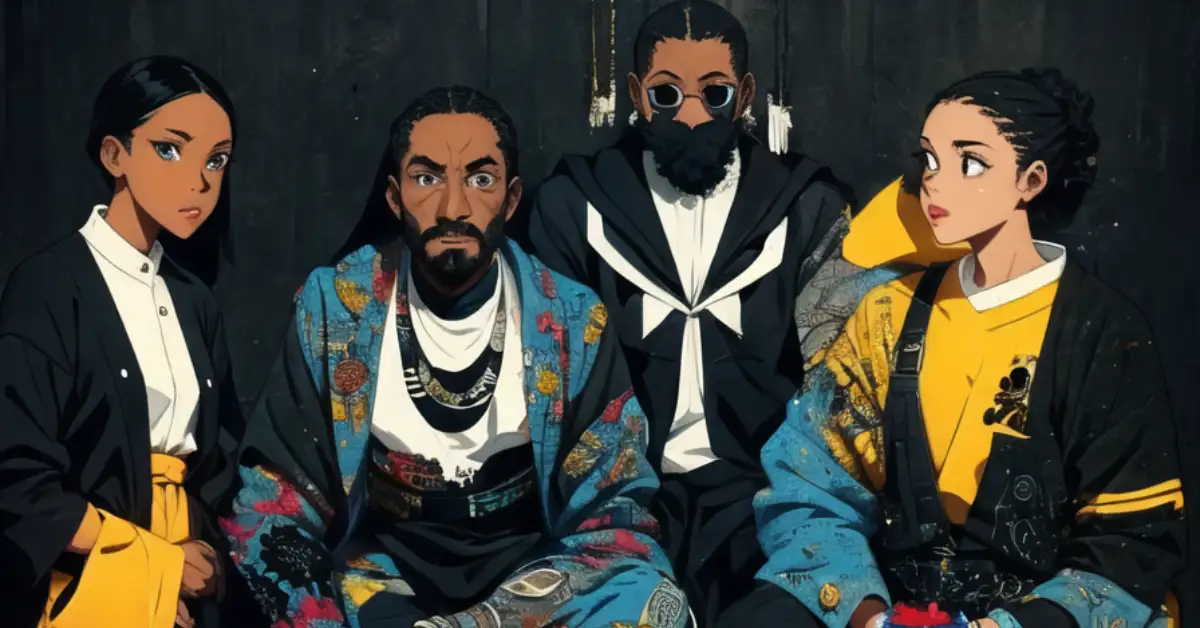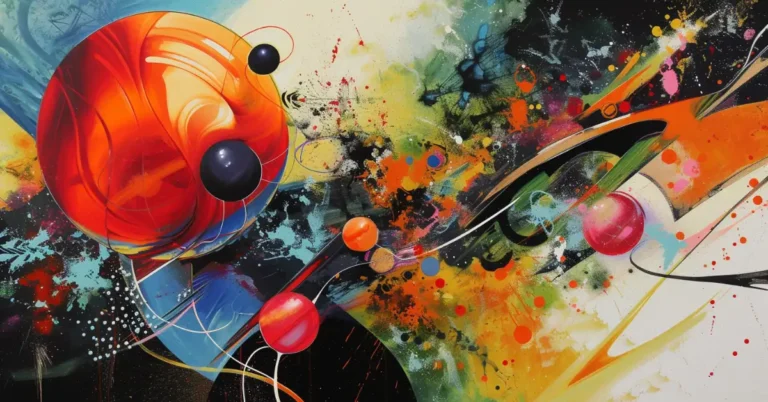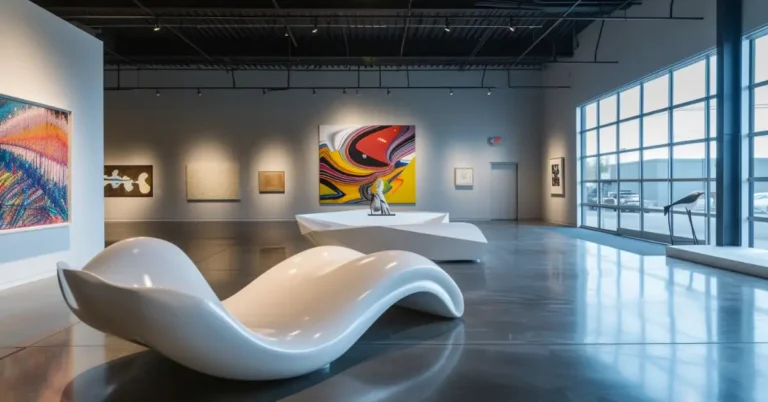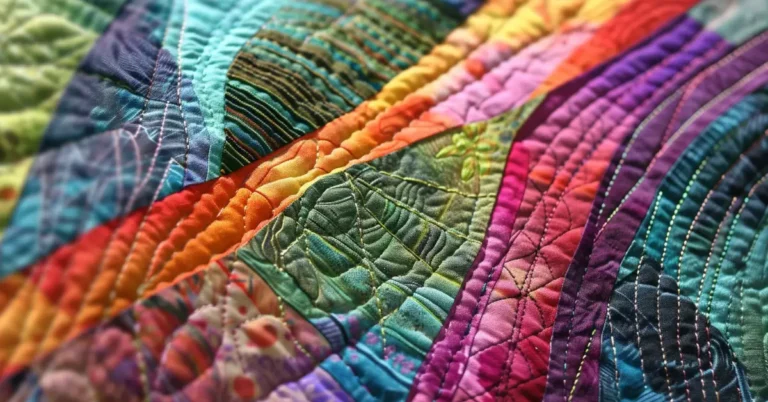Discover the transformative power of contemporary black art, a force redefining beauty, identity, and power through its bold narratives and aesthetic innovation. Delve into a world where black artists use their diverse experiences to craft works that spark conversation, challenge societal norms, and offer insightful commentary on our shared reality. Engage with art that not only captivates but also celebrates the resilience and creativity of the black community.
What is Contemporary Black Art?
We’re diving right into the vibrant world of contemporary black art, a dynamic field that brings a plethora of voices, experiences, and aesthetics to the forefront. This art movement, emerging primarily post-1960s, encompasses a wide array of works by artists of African descent that tackle the complex interplay of race, identity, politics, and cultural heritage.
Key Elements of Contemporary Black Art:
- Narrative: Often draws on personal and collective experiences
- Mediums: Utilizes traditional (painting, sculpture) and unconventional (performance, multimedia)
- Purpose: Challenges stereotypes and provokes dialogue
When we look at these artists’ creations, we see powerful reflections of both individual and collective experiences. They navigate through social landscapes, addressing issues of systemic racism, post-colonialism, and intersectionality.
| Artist | Known For | Signature Style |
|---|---|---|
| Amy Sherald | Portraying African Americans in vibrant settings | Grayscale figures with colorful backdrops |
| Mickalene Thomas | Exploring black female identity and sexuality | Bold patterns, rhinestones, and acrylic |
| Kehinde Wiley | Large-scale portraits of Black individuals in historical poses | Juxtaposing contemporary subjects in classical formats |
| Kara Walker | Silhouette installations about the Antebellum South | Stark black-and-white cut-paper works |
The names shared here are just a sliver of the many talented individuals shaping contemporary black art. Their work often holds a mirror up to society, posing questions and inviting us to engage in essential conversations about the present and future. It’s a thrilling realm where each piece resonates with a story waiting to be heard and felt.
Trailblazers of Contemporary Black Art
As we explore the impact of African American artists, it’s thrilling to see how they’ve shaped the narrative of contemporary black art. Their dynamic works are not just visual statements but also historical dialogues that resonate with many.

Pinterest Victoria Miro Gallery | Njideka Akunyili Crosby
The Harlem Renaissance
- Era: 1920s-1930s
- Significance: Birthed a culturally rich movement that redefined African American expression and contributed significantly to contemporary black art.
The Harlem Renaissance was a vibrant celebration of African American culture, primarily through the visual arts, music, literature, and performance. It was a period where artists like Aaron Douglas and Archibald Motley curated a new visual language that incorporated African influences with a vibrant expressionist style. This era redefined African American identity and laid the groundwork for future generations of artists.
Civil Rights Influence on Art
- Period: 1950s-1980s
- Impact: Art as activism; bold, political statements showcasing the struggle for equality.
The Civil Rights movement catalyzed African American artists to use their craft as a powerful form of protest and solidarity. Leaders in this transformative era, like Faith Ringgold and Betye Saar, bravely utilized their art to make poignant statements about race, identity, and politics. Works from this period transformed art into a vehicle for social change and consciousness.
Contemporary Pioneers
- Trendsetters: Evolving the conversation
- Artists to Watch: Kehinde Wiley, Mickalene Thomas, Kara Walker, Amy Sherald
Our current landscape of contemporary black art is outlined by pioneers who are fearless in their approach. Kehinde Wiley’s regal and powerful portraits, such as former President Barack Obama’s official portrait, confront historical narratives and redefine them. Mickalene Thomas presents intricate works that highlight the beauty and power of black femininity. Kara Walker challenges us with her thought-provoking silhouettes that address the complexities of race and history. Lastly, Amy Sherald captures the essence of individuality in the African American experience with her unique use of color and form. Each artist contributes to the vibrant and dynamic tapestry of contemporary black art, inspiring us and generations to come.
Defining Identity and Representation
Contemporary black art is a vibrant and powerful force, giving a visual voice to stories and identities. It’s a celebration of culture, a testament to the resilience of the African diaspora, and a bold reflection of the social landscape. We see artists challenging narratives, showcasing the beauty of black identity, and confronting historical gaps through their art. It’s thrilling to witness and be part of this cultural shift where representation takes center stage.

Pinterest Richard Mudariki (Zimbabwean, b. 1985) Bonde, 2021 Oil on canvas
Portraiture and Identity
The use of portraiture in black art is not just about capturing faces; it’s an intimate exploration of identity. One landmark moment was the unveiling of Michelle Obama‘s portrait by Amy Sherald, which went beyond mere representation. It redefined representation by depicting strength, grace, and the multifaceted nature of black women. Such portraits are not mere images; they are powerful assertions of existence and dignity in a world where these qualities have been historically overlooked.
Storytelling through Art
Every piece of art tells a story, and within contemporary black art, these stories sculpt our understanding of race and identity. They narrate personal and collective experiences, from the joyous to the tragic. The commemoration of Breonna Taylor, for example, extends beyond news headlines to convey a deeper narrative about race, gender, and systemic injustice. This art bridges the gap between past and present, ensuring that stories serve as both reminders and lessons for our future.
Gender and Power Dynamics
In the domain of contemporary black art, gender and power dynamics are often at play. This art dismantles traditional roles and stereotypes, particularly regarding black women, who are depicted with complexity and nuance. Through visual narratives, artists confront the norms and dynamics that have long defined black femininity and masculinity, championing a more inclusive and empowering vision of what it means to be black today.
Contemporary black art is not static; it’s a fluid narrative ever-evolving with the times. It’s a celebration of black life in all its facets, a bold claim of space where race, identity, and representation coalesce to form something truly magnificent.
Artistic Mediums and Techniques of Contemporary Black Art
In our exploration of contemporary black art, we’re witnessing a vibrant array of artistic mediums and innovative techniques. These artworks are not only visually enthralling but also rich in narrative and diversity, seamlessly blending traditional methods with modern expressions.

The Evolution of Black Photography
Black photographers have been pushing the boundaries of the medium, using both traditional film and digital photography to capture and convey powerful messages about identity and social justice. Dynamic uses of lighting, shadow, and composition turn photographs into profound statements on the Black experience. For example, through their lens, artists redefine the Black body and identity in unique ways that challenge the viewer’s perceptions.
Innovations in Painting and Sculpture
We are seeing captivating advances in the realms of painting and sculpture, with acrylic and enamel paints offering vibrant hues and deep textures. Artists like Mickalene Thomas are known for incorporating rhinestones into their paintings, adding a three-dimensional, tactile element to their work. In sculpture, materials like fabric, textiles, and even found objects are transformed into evocative pieces that narrate rich stories.
Mixing Mediums
Our artists aren’t just sticking to one medium; they’re proficiently mixing mediums to create multidisciplinary works that engage all the senses. Installations may combine video art with physical elements like sculptures or drawings, providing an immersive experience. Take the transformative practices across disciplines, where a single exhibition can incorporate an array of methods, materials, and meanings, including the use of video and installations to tell a story beyond the static image.
Art in Public and Private Spaces
Contemporary black art is not just an aesthetic choice; it’s a powerful statement of identity and history. In galleries and on the streets, these works tell stories that engage the black community and the art world at large.

Pinterest Grey Matter | SoulCurryArt, Ishita Banerjee
Black Art in Museums
In renowned institutions like the Whitney, we can witness the ever-evolving presence of black art. Carefully curated, the exhibits on display are often a blend of thought-provoking and soul-stirring pieces, bringing to life the archives of history through the lens of black artists. This presence not only broadens the perspective of museumgoers but also cements black art as an indispensable facet of the museum experience.
- Exhibitions: Showcases of contemporary black artists’ work, often offering a dialogue with historical pieces.
- Archives: A repository that preserves the rich history of black artistic endeavors.
Urban Art and Community Spaces
The streets serve as a canvas for public art, echoing the heartbeat of the black community. Murals and installations in urban spaces bring the vibrancy and creativity of contemporary black artists to the forefront, fostering a sense of pride and ownership in our shared spaces.
- Murals: Larger-than-life artworks that transform buildings into storytelling platforms.
- Community Projects: Initiatives that involve local residents, often aiming to beautify and uplift neighborhoods.
My 5 Favorite Contemporary Black Artists
Contemporary black art brings a breadth of perspective and richness to the art world that we find deeply moving. We are thrilled to share our top five contemporary black artists whose work inspires and challenges us.
| Artist | Notable Work | Artistic Style |
|---|---|---|
| Kara Walker | A Subtlety | Silhouettes, exploring race, gender, and sexuality |
| Kehinde Wiley | President Obama’s official portrait | Naturalistic, renaissance style with modern twists |
| Kerry James Marshall | School of Beauty, School of Culture | Interrogates black identity through history |
| Njideka Akunyili Crosby | I Refuse to be Invisible | Complex collage work, blending personal and political |
| Bisa Butler | The Safety Patrol | Vibrant quilts capturing African American life |
- Kara Walker is renowned for her candid exploration of race, gender, and sexuality. We’re captivated by the confronting narratives in her work.
- Kehinde Wiley’s art is a celebration of black culture, bringing it into a classical context we find awe-inspiring, particularly with his presidential portraits.
- Kerry James Marshall’s masterful paintings reveal layers of black experiences that we find educational and poignant.
- Witnessing Njideka Akunyili Crosby’s multimedia collages is like experiencing a personal story that also speaks to a collective memory.
- The vibrant tapestries of Bisa Butler play with color and pattern in a way that brings historical black narratives to the forefront of our imagination.
These artists through their unique lenses offer us an in-depth look into the diversity and vibrancy of contemporary black art.
FAQ – Contemporary Black Art
What is contemporary black art?
Contemporary Black art is art created by artists of African descent that often critiques the construction and representation of Black identity, race, and intersectionality.
What is black modernism?
Black Modernism is an artistic and intellectual movement among African Americans that engaged with the broader Modernist movement while exploring Black identity, history, and culture. It often addressed issues like racial oppression and celebrated African American experiences and creativity, as seen in the Harlem Renaissance.
What is black futurism?
Black Futurism, often referred to as Afrofuturism, is a cultural aesthetic, philosophy, and movement that explores the intersection of the African diaspora with science fiction and technology, envisioning a future in which Black culture and identity are central.
What is new black realism?
New Black Realism is a term that refers to a wave of films in the early 1990s directed by young African-American men, characterized by contemporary urban settings, young black protagonists, and themes addressing the complexity of modern African-American life.
Enjoyed our blog post on “contemporary black art“? We’d love to hear your thoughts! Drop us a comment below and share your experience with the piece.
If you want to keep reading more from us, have a look at these articles.






Your post was a delightful read. I appreciate the mix of solid data and personal insights.